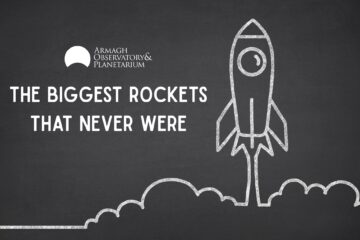Since the beginning of the space age, humanity has been sending robotic emissaries to all corners of the solar system. These represent some of the most complex technological undertakings ever conceived. Travelling for years and even decades to their destinations, they have helped form a modern picture of the solar system, replete with the bizarre but also the familiar, that is very different than the views held by previous generations. This year promises to enrich our collective conscious with new vistas of the lunar landscape, close-up views of space rocks that might one day threaten the Earth and its inhabitants and the first ever recordings of earthquakes..on Mars! The complexity of these missions means that everything does not always go according to plan, but nevertheless we have seen fit to provide our readership with this appetiser for robotic exploration in 2018 by the world’s space agencies:
First off is Chandrayaan II, a robotic mission featuring an orbiter/lander/rover combination and developed by the Indian Space Research Organisation (ISRO), the country’s equivalent to the American NASA. It is scheduled to be launched from Sriharikota island off the off the Bay of Bengal coast on-board a Geostationary Satellite Launch Vehicle (GSLV) rocket sometime this Spring. After about a month it will enter orbit around the Moon. Then a lander will descend to the surface, while the orbiter module will stay above to survey the lunar globe and relay the signals from the lander back to Earth. The rover is planned to deploy from the lander and roam about, exploring the composition of the landing site. Both lander and rover are expected to operate for a lunar day, about two Earth weeks. If successful, this landing attempt will mark two important firsts for India: first landing on any planetary body other than the Earth and first landing on the moon. Although not entirely clear where precisely the lander will touch down, there are strong indications that it will target one of the poles, where significant deposits of water ice have been discovered by previous missions. The water would have been left behind by impacting comets and asteroids during the billions of years of the Moon’s existence. Apart from offering a treasure trove of information on the past history of the solar system, this cache of water has been touted as an invaluable resource – in the form of breathing oxygen or hydrogen rocket fuel – for future human-tended colonies on our natural satellite. The landing will also mark the first time any space probe has landed near the poles.

The Origins Spectral Interpretation Resource Identification Security – Regolith Explorer spacecraft will travel to a near-Earth asteroid, called Bennu (formerly 1999 RQ36), and bring at least a 2.1-ounce sample back to Earth for study. The mission will help scientists investigate how planets formed and how life began, as well as improve our understanding of asteroids that could impact Earth. (Credit: NASA)

Hayabusa2 will utilize new technology while further confirming the deep space round-trip exploration technology by inheriting and improving the already verified knowhow established by Hayabusa to construct the basis for future deep-space exploration. (Credit JAXA)
Summertime belongs to the asteroids! Two space probes are, at this very moment, on their way to rendezvous with two tiny worlds that orbit the Sun near the Earth’s path and could potentially collide with our planet in the distant future. One is OSIRIS-REx, a NASA mission launched in 2016 and targeting the 0.5-km wide asteroid (101955) Bennu; the other is Hayabusa II, launched by the Japanese Exploration Agency (JAXA) two years earlier to investigate the slightly larger object (162173) Ryugu. Both will commence their final approach later this year. Once there, they will map out the asteroids’ surfaces using a suite of cameras and spectrometers. In what promises to be the climax of each mission, they will attempt to collect soil samples, to be brought back to Earth some years later. This is not a first; Hayabusa II’s predecessor returned a precious few grains from asteroid (25143) Itokawa to Earth in 2010. But, unlike Itokawa, Bennu and Ryugu are thought to be rich in carbon-bearing compounds and (possibly) more complex organic molecules as well as water. It is believed that objects like these delivered the water in Earth’s oceans early in the solar system’s history and enriched our planet with the ingredients needed for life’s development. So scientists around the world are understandably eager to begin analysing the samples as soon as they return to Earth in the early 2020s.

InSight (Interior Exploration using Seismic Investigations, Geodesy and Heat Transport) is a NASA Discovery Program mission that will place a single geophysical lander on Mars to study its deep interior. But InSight is more than a Mars mission – it is a terrestrial planet explorer that will address one of the most fundamental issues of planetary and solar system science – understanding the processes that shaped the rocky planets of the inner solar system (including Earth) more than four billion years ago. (Credit: NASA)
A month or two later, the US National Aeronautics and Space Administration (NASA) wil launch the Insight probe (an acronym for Interior Exploration using Seismic Investigations, Geodesy and Heat Transport) to the planet Mars. Once it touches down on the Martian surface six months later, it will proceed to measure, for the first time, the planet’s heartbeat; in other words, listen for seismic events or Marsquakes. Although there are models that tell us that Mars, like Earth, should be made up of a core, a mantle and a crust, this has not yet been confirmed by direct observations. But by detecting seismic waveforms travelling through the body of Mars, scientists can tell whether the waves go through a solid (e.g. a mantle) or a liquid layer (a core) and how thick these are. The same techniques are used by the oil industry to detect pockets of oil or gas many kilometres beneath the ground and the sea floor. If all goes well, the lander should continue operating for at least one Martian year, about two Earth years, and detect hundreds of Marsquakes. It is expected that some of these would be caused by small asteroids hitting the Martian surface, digging up craters tens to hundreds of metres across; knowing how often this happens will help determine the age of different types of Martain terrain and allow to build up a picture of the planet’s geological history. Interestingly, Insight will have some company during its trip to Mars; two small cubesats each no bigger than a suitcase and collectively called Mars Cube One or MarCO for short, will travel along the main spacecraft and help relay communications during the probe’s atmospheric entry, descent and landing phase.

The Chang’e 3 spacecraft on the surface of the moon. (Source: : www.planetary.org)
The year ends in much the same way that it began, with a robotic moon landing, this time by the Chinese Chang’e 4 spacecraft. As the name suggests, it is the fourth in a series of probes China has sent to the moon over the last 10 years. The previous one, Chang’e 3, landed near Sinus Iridum on the near side in 2013, the first lunar soft landing by a human artefact since 1976. Remarkably, that spacecraft is still operating and sending back data. Chang’e 4 will attempt another first: landing on the far side of the moon, in other words the part that is constantly out of view of Earth observers. For such a mission, where the lander has no direct communications link to ground control, the plan is to launch a separate satellite, probably sometime in June, to “sit’’ above the far side and relay data from the lander. One of the questions scientists want to answer with such a mission is how “quiet’’ the far side of the moon is; just as one cannot do optical astronomy during the daytime, devices on Earth generate radio waves – anything from microwave ovens to mobile phone networks – that prevent a really sensitive exploration of natural radio sources in the universe. But the lunar far side should be a much better place for astronomical radio observations, with the bulk of the moon effectively blocking all Earth-based transmissions. If Chang’e 4 confirms this, the day will not be far away where space-faring nations establish radio observatories on the lunar surface to explore the cosmos with unprecedented sensitivity.
Article written by: Apostolos Christou




3 Comments
Fire-bred · April 10, 2018 at 02:12
Well, Jupiter is a planet that is made out of hydrogen and helium… the same elements that the sun is made of but Jupiter can’t ignite because of simply its size. In order for it to ignite Jupiter is going to have to gain mass by gaining hydrogen and helium or eat its moons.. It’s going to need to gain 80 times it’s mass at this given point in time. This is considered a failed star.. But here’s what I’ve but together from watching ‘how the universe works’ ‘the planets and beyond’ that Jupiter could be the suns twin. A binary twin or a binary solor system in which you have two suns. Just imagine looking up at the sky and seeing two suns… the heat, light… if we were to live in a binary solor system the Goldilocks zone would probably extended for so far.
Top Astronotes of 2018 – Dinezh.com · February 9, 2019 at 04:20
[…] Planetary Exploration in 2018 – This blog was written by resident astronomer Apostolos Christou, who provided many more fascinating blogs throughout 2018. This particular article was a great way to start the year with a look into what planetary exploration would be occurring throughout the year. He covered everything from InSight to Chang’e. Click on the blog title to read more. […]
Planetary Exploration in 2018 – MeasurementDataBases for Industry & Science · January 19, 2018 at 16:58
[…] Astronotes Astronotes: Since the beginning of the space age, humanity has been sending robotic emissaries to […]